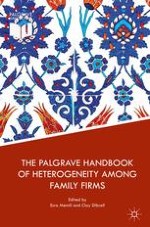2019 | OriginalPaper | Chapter
3. The Most Influential Family Business Articles from 2006 to 2013 Using Five Theoretical Perspectives
Authors : Dustin L. Odom, Erick P. C. Chang, James J. Chrisman, Pramodita Sharma, Lloyd Steier
Published in: The Palgrave Handbook of Heterogeneity among Family Firms
Publisher: Springer International Publishing
Activate our intelligent search to find suitable subject content or patents.
Select sections of text to find matching patents with Artificial Intelligence. powered by
Select sections of text to find additional relevant content using AI-assisted search. powered by
